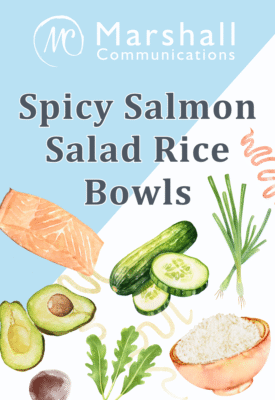Posted on: August 22, 2016
 Are press releases still relevant in these days of instant news via the web and social media? Absolutely! This traditional piece of a public relations strategy remains one of the most effective ways for your news to make its way in front of the media before being distributed to your target audiences. But writing and distributing a press release is just the first step—how do you increase your chances that the media calls for additional information, requests additional quotes or an interview, shares your story with their audiences or attends your event? After all, that is most likely the goal of your release…
Are press releases still relevant in these days of instant news via the web and social media? Absolutely! This traditional piece of a public relations strategy remains one of the most effective ways for your news to make its way in front of the media before being distributed to your target audiences. But writing and distributing a press release is just the first step—how do you increase your chances that the media calls for additional information, requests additional quotes or an interview, shares your story with their audiences or attends your event? After all, that is most likely the goal of your release…
We’ve pulled together this list of 14 tips that will increase the chances that the media aren’t just opening your release and moving on to the next one.
- Focus on the news.
The only way your press release will be picked up by the media is if the content is newsworthy. Determine exactly what story you’re trying to tell and why it would be interesting to their readers. Remember, news happening within your organization or your clients’ may be interesting to you, but it’s possible that others won’t find it as interesting.- Create an attention grabbing title.
Assignment editors receive hundreds of press releases, pitches and emails every day. Ensure they open your email with an attention grabbing title (email subject line) that tells them exactly what your release is about.- Answer the 5 W’s in the first paragraph.
The media will decide whether or not they are interested in the release by the end of the first paragraph or even from the title. Answer these simple questions to provide them with the critical information in just a few sentences: Why would readers be interested in this topic? Who is this news about? What is the news? Where is this taking place? When is this event happening or did it already happen?- Get straight to the point.
Writing your releases with the notion that some editors will copy and paste your release until they run out of room is a good idea. Be sure to get straight to the point within the content; organizing the information in order from most to least important. Media may scan the release, so it is important to eliminate the fluff.- Write in third person.
Do not use I or we unless it is in a direct quote. Press releases are meant to be factual and should not contain any bias or opinions.- Include quotes.
Quotes give a human element to the press release and an insider’s perspective to the news. The use of quotes increases the credibility of the release. Including a headshot, if discussing a new hire or positioning yourself as an expert, gets you bonus points!- Use statistics as much as possible.
Media are much more likely to feature an event that raised $20,000 for charity than an event that raised ‘a lot of money’ for charity. Show the significance of your news with quantitative data.- Include links to high-resolution image(s).
Images catch the readers’ attention and help make covering the news easier for media. The images should include crediting information and should be ready for use in print or online, meaning the highest resolution possible. Using Dropbox is a great way to store images that you can link to for the high-resolution versions, which are usually too large to attach to an email.- Keep the release short.
Keep your release to two pages maximum, however one page or less is preferred. Media advisories should be kept to one page.- Incorporate links.
Don’t make the reporters or media search to find answers for their questions. Include links that will provide them with the resources to gather additional valuable information.- Remember your goals.
Do you want the media to attend your product launch or promote your event as a family-friendly activity that can’t be missed this weekend? Focus on the outcome you want from the release and check to make sure the message is consistent with your goals once the release is written.- Avoid sales language.
Remember that you are talking to a reporter, not the end-user. In order to maintain credibility, avoid using excessive adjectives and sales-pitch language. Stay factual and to the point with any releases being sent to the media. Additional information can always be sent during the follow-up process.- Format contact information at top of the page.
A designated media contact or spokesperson’s name, number and email address should be above the title of your release. The point of the release is to have media cover your story, so make sure they know how to contact you should they have any questions.- Include a boilerplate at the end.
Located at the end of the release, a boilerplate gives a five-second snapshot of your business or organization. Not everyone is familiar with your business or organization and what your purpose is. This paragraph should be generic and kept consistent for all releases and advisories. - Create an attention grabbing title.










